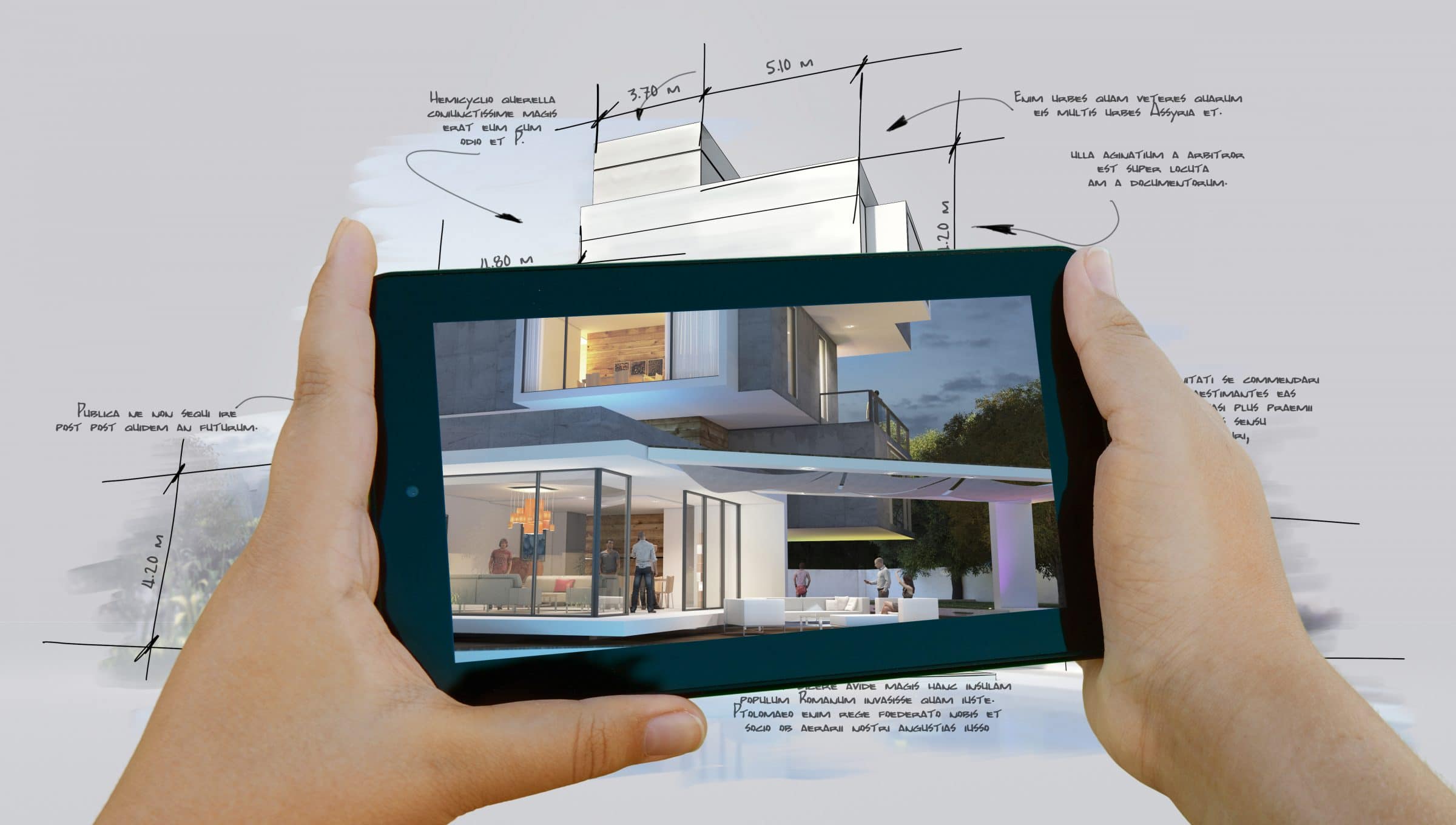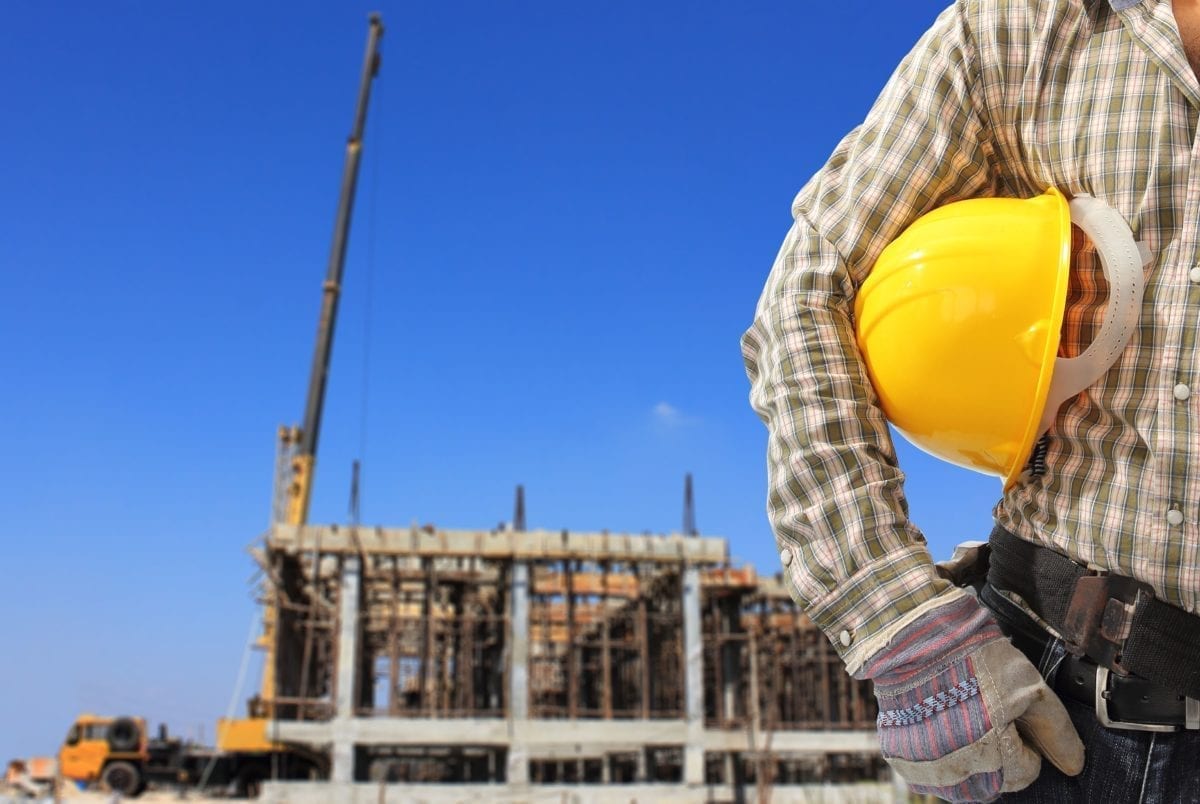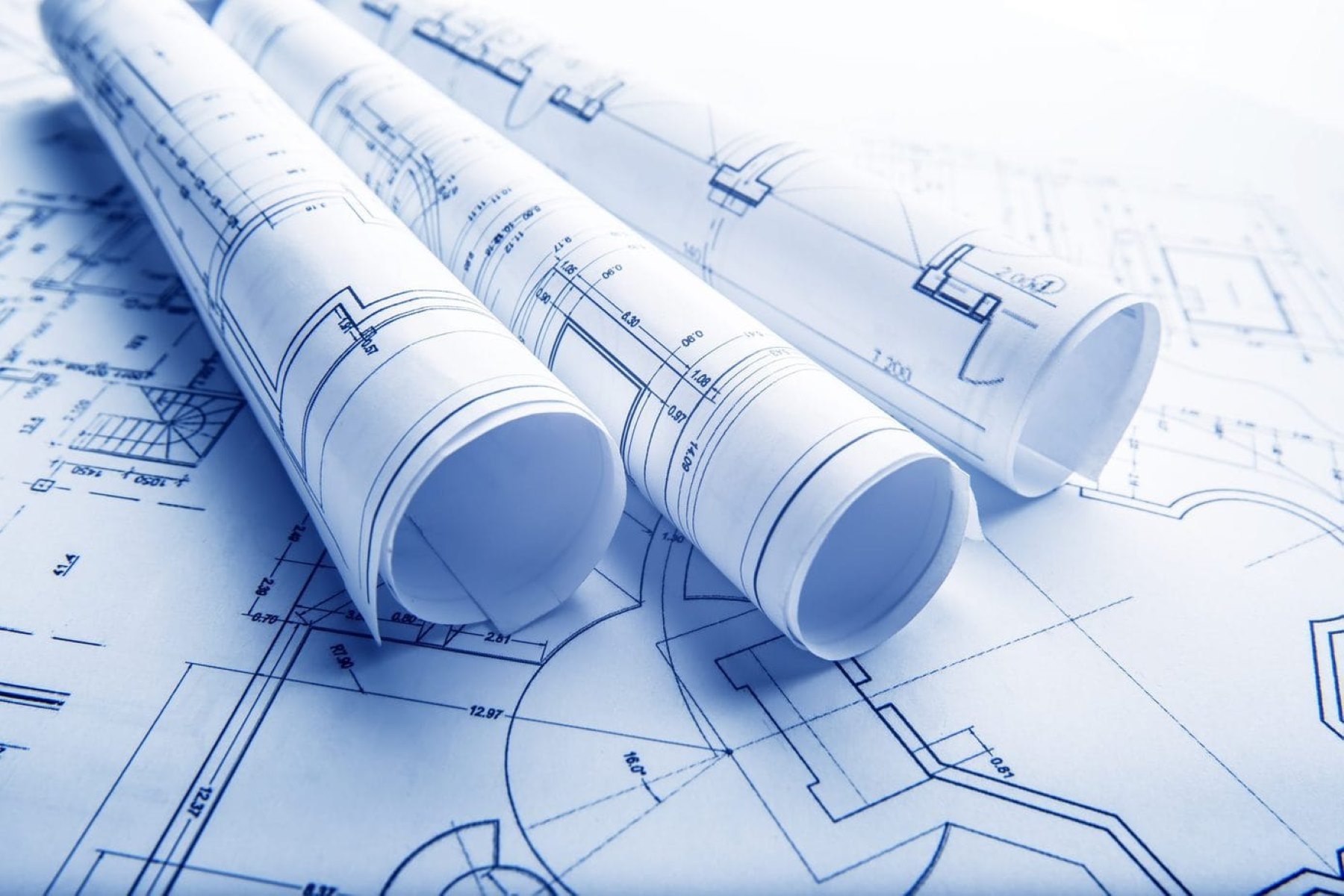Home>diy>Building & Construction>Why BIM Is Important?


Building & Construction
Why BIM Is Important?
Modified: December 7, 2023
Discover why BIM is crucial in the realm of building construction, enhancing efficiency, collaboration, and accuracy for architects, engineers, and contractors.
(Many of the links in this article redirect to a specific reviewed product. Your purchase of these products through affiliate links helps to generate commission for Storables.com, at no extra cost. Learn more)
Introduction
In the ever-evolving field of construction, technology has played a vital role in transforming the way projects are planned, designed, and executed. One such technological advancement that has revolutionized the construction industry is Building Information Modeling, commonly known as BIM. BIM refers to a digital representation of a building’s physical and functional characteristics, providing a collaborative and integrated approach to the construction process.
BIM has gained significant traction in recent years due to its ability to improve communication, enhance collaboration, and streamline the construction process. By utilizing BIM, construction professionals can create a virtual model of the building, incorporating detailed information about its materials, components, systems, and spatial relationships.
This article aims to explore the importance of BIM in the construction industry. It will delve into the various benefits that BIM offers, including enhanced collaboration, improved project visualization, cost and time savings, and better communication and coordination. Moreover, it will examine the positive impact of BIM on facility management and the environment, solidifying its position as an indispensable tool in the construction sector.
Stay tuned as we delve deeper into the world of BIM and uncover the myriad advantages it brings to the table.
Key Takeaways:
- BIM revolutionizes construction by enhancing collaboration, improving project visualization, and streamlining the design and construction process. It fosters efficient teamwork, reduces errors, and accelerates project timelines, ultimately delivering successful outcomes.
- BIM extends its impact beyond construction, benefiting facility management and promoting sustainability. It empowers facility managers with comprehensive building data, optimizes energy performance, and supports sustainable practices, contributing to a greener and more efficient built environment.
Read more: Why Are Pillows Important
Enhanced Collaboration
One of the key reasons why BIM is important in the construction industry is its ability to enhance collaboration among various stakeholders, including architects, engineers, contractors, and clients. Traditional construction methods often lead to fragmented communication and disconnect between team members, resulting in delays, errors, and costly rework.
BIM provides a common platform where all project participants can collaborate seamlessly, offering real-time access to the latest project information. This ensures that everyone is on the same page, reducing misunderstandings and conflicts. Through BIM, teams can share design models, documents, and data, facilitating smooth coordination and streamlined decision-making.
Furthermore, BIM fosters interdisciplinary collaboration by breaking down silos. Architects, engineers, and contractors can work together from the early stages of a project, exchanging feedback and validating design decisions. By integrating all disciplines into a single model, potential clashes, such as clashes between architectural and structural elements, can be detected and resolved in the pre-construction phase, minimizing costly on-site conflicts and rework.
BIM also encourages collaboration among stakeholders throughout the entire construction lifecycle. With the capability to track changes and provide a comprehensive project history, BIM enables effective communication and coordination during construction, reducing the likelihood of errors and improving overall project quality. Additionally, BIM models can be updated and shared with facility managers and maintenance teams, enhancing post-construction collaboration for better facility management.
Overall, enhanced collaboration through BIM leads to better teamwork, increased transparency, and improved efficiency in the construction process. By breaking down barriers and promoting open communication, BIM fosters a collaborative environment that ultimately contributes to the successful delivery of projects.
Improved Project Visualization
In the world of construction, visualizing a project before it is built is crucial for making informed decisions and ensuring a successful outcome. This is where BIM excels by providing improved project visualization capabilities.
BIM allows project stakeholders to create accurate and realistic 3D virtual models of the building, incorporating various elements such as walls, floors, windows, and doors. These models are not just static representations but dynamic, intelligent models that can simulate the behavior and performance of the building, including lighting, acoustics, and energy consumption.
With BIM, stakeholders can take virtual tours of the building, exploring different spaces and visualizing the design from multiple perspectives. This immersive experience enables better understanding and visualization of the project, facilitating more informed decision-making. Architects can evaluate the aesthetic aspects of their designs, ensuring the building aligns with the client’s vision. Engineers can analyze the structural integrity and optimize systems for efficiency. Contractors can identify potential conflicts or constructability issues, leading to more accurate cost estimates and schedules.
Moreover, BIM’s visualization capabilities extend beyond the design phase. During the construction phase, project managers can use BIM models to plan and sequence construction activities, optimizing resource allocation and minimizing potential delays. Construction teams can virtually explore construction sequences and simulate the building process, identifying any potential clashes or coordination issues in advance.
BIM also enhances project visualization for stakeholders who may not have a technical background. Clients and end-users can visualize their future space, helping them make informed decisions about design elements, finishes, and layouts. This level of engagement and understanding fosters client satisfaction and reduces the likelihood of costly design changes during construction.
By offering improved project visualization, BIM empowers stakeholders to gain a comprehensive understanding of the design, enhancing collaboration and enabling proactive decision-making. It eliminates uncertainty, reduces risks, and contributes to the successful delivery of visually appealing and functional buildings.
Efficient Design and Construction Process
Efficiency is of paramount importance in the construction industry, where time and cost are critical factors. BIM plays a crucial role in streamlining the design and construction process, optimizing workflows, and improving overall efficiency.
One of the key benefits of BIM is its ability to facilitate iterative and collaborative design processes. With BIM, designers can create and modify digital models rapidly, allowing for quick iterations and accurate design refinements. This iterative approach enables architects and engineers to explore various design options, test their viability, and make informed decisions, ultimately leading to optimized and efficient designs.
BIM also significantly reduces errors and rework during the construction phase. By providing a digital representation of the building, BIM allows contractors to identify potential clashes, constructability issues, and conflicts between different building elements. This early clash detection minimizes on-site rework, saving time, and reducing costs. Contractors can accurately plan construction sequences and visualize how various components come together, ensuring smooth installation and coordination.
Additionally, BIM’s integration with estimating and scheduling software improves the accuracy of cost estimates and project timelines. BIM models contain detailed information on materials, quantities, and specifications, enabling precise cost calculations and eliminating the need for manual takeoffs. This integration ensures that budgets and schedules are more realistic, leading to better project planning and financial management.
BIM also aids in the procurement process by providing accurate and up-to-date information. With the integration of BIM and supply chain management, contractors can easily identify and manage the procurement of materials and equipment, reducing delays and ensuring timely delivery to the construction site.
Furthermore, BIM improves communication and coordination among project stakeholders. The ability to share real-time data and collaborate through a centralized platform minimizes miscommunication errors and allows for better coordination between different trades. This ultimately leads to a more synchronized construction process, reducing delays and improving project efficiency.
By enabling efficient design iterations, reducing errors, optimizing schedules and budgets, and improving communication, BIM streamlines the entire design and construction process. It allows for efficient collaboration and decision-making, resulting in cost and time savings, increased productivity, and improved project outcomes.
Cost and Time Savings
Cost overruns and project delays are common challenges faced by the construction industry. However, BIM has emerged as a powerful tool in mitigating these issues by offering substantial cost and time savings throughout the project lifecycle.
BIM enhances cost savings by providing more accurate and detailed cost estimates. Traditional methods of estimating costs often rely on manual takeoffs and assumptions, which can lead to inaccuracies and unforeseen expenses. By integrating BIM with estimating software, contractors can generate precise cost estimates based on the digital model’s information. This eliminates the need for manual calculations and increases the accuracy of budgeting, reducing the likelihood of budget overruns.
In addition, BIM enables enhanced material management and procurement. Through effective collaboration and information sharing, BIM ensures that the right quantity of materials is ordered at the right time, minimizing waste and reducing costs associated with excess inventory or last-minute rush orders. BIM also aids in value engineering, where cost-saving alternatives can be identified and evaluated early in the design phase, resulting in optimized material choices and construction methods.
Moreover, BIM’s clash detection capabilities help avoid costly design conflicts and rework. By identifying clashes between different building elements or systems in the virtual model, BIM allows for timely resolution and coordination prior to construction. This reduces the need for on-site modifications and rework, saving both time and money. Contractors can also optimize construction sequencing and identify potential scheduling conflicts through BIM, ensuring a smoother construction process and minimizing delays.
BIM also contributes to time savings by improving project coordination and reducing communication delays. By providing a centralized platform for collaboration, stakeholders can quickly exchange information, share updates, and make decisions in real-time. This eliminates the need for back-and-forth communication and allows for faster decision-making, accelerating project timelines.
Furthermore, BIM’s visualization capabilities aid in efficient construction sequencing and logistics planning. Contractors can virtually simulate the construction process, identifying potential bottlenecks and optimizing the use of resources. This leads to streamlined construction activities, reduced idle time, and improved project efficiency.
By incorporating BIM into construction projects, cost and time savings can be achieved through accurate cost estimates, efficient material management, clash detection, improved coordination, and optimized construction sequencing. These savings contribute to the overall success of the project and the financial well-being of the stakeholders involved.
When explaining why BIM is important, emphasize its ability to improve collaboration, reduce errors, and streamline the construction process, ultimately leading to cost and time savings.
Read more: Why Insulation Is Important
Enhanced Facility Management
Beyond its impact on the design and construction phases, BIM offers significant benefits for facility management, ensuring smooth operations and enhanced maintenance of the built environment. By providing a comprehensive digital representation of the building, BIM serves as a valuable tool for facility managers to efficiently manage and maintain the facility over its lifecycle.
BIM’s integration with facility management software allows for the seamless transfer of data from the construction phase to the operational phase. Detailed information about building components, systems, and equipment is captured in the BIM model, providing a wealth of information for facility managers. This data can include specifications, maintenance schedules, operating manuals, and supplier information, among others.
Using BIM, facility managers have access to a centralized and up-to-date repository of information, enabling them to effectively plan and execute maintenance activities. They can schedule routine maintenance, track equipment performance, and identify potential issues before they escalate into costly breakdowns. BIM’s data-rich environment facilitates predictive maintenance, allowing for the proactive replacement of equipment or upgrading of systems based on performance and lifecycle data.
BIM also enhances facility management by improving space utilization and optimization. With the ability to accurately visualize the building and its spatial relationships, facility managers can effectively manage occupancy levels, identify underutilized areas, and make informed decisions about space allocation and reconfiguration.
Furthermore, BIM aids in energy management and sustainability initiatives. The model can be integrated with energy analysis software to assess the building’s energy performance, identify energy-saving opportunities, and optimize systems for efficiency. Facility managers can monitor energy consumption, track trends, and implement strategies to reduce operating costs and carbon footprint.
Another advantage of BIM in facility management is its impact on safety and emergency preparedness. Through the inclusion of fire safety and emergency evacuation plans within the model, facility managers can ensure compliance with safety regulations and facilitate efficient emergency response in the event of an incident.
Overall, BIM enhances facility management by providing accurate and comprehensive information about the building, enabling proactive maintenance, optimizing space utilization, improving energy efficiency, ensuring safety compliance, and supporting sustainable practices. By utilizing BIM, facility managers can maximize the operational efficiency of buildings, extend their lifespan, and enhance the overall value of the facility.
Better Communication and Coordination
Effective communication is a cornerstone of successful construction projects. BIM plays a pivotal role in facilitating better communication and coordination among project stakeholders, leading to improved project outcomes and reduced risks.
BIM serves as a centralized platform where stakeholders can access and share project information in real-time. This eliminates the need for manual document exchange and reduces the risk of miscommunication. With BIM, architects, engineers, contractors, and clients can collaborate seamlessly, ensuring that everyone has access to the most up-to-date project data and documentation.
Through BIM, team members can effectively communicate their design intent and requirements. With the ability to create detailed 3D models, architects can visually convey their design concepts to clients and receive feedback in a more intuitive manner. Engineers can communicate their technical specifications, allowing for a deeper understanding of design implications. Contractors can provide input and insights on constructability, resulting in more informed design decisions.
BIM’s coordination capabilities also play a crucial role in enhancing communication. By integrating all aspects of the building design and construction process into a single model, clashes and conflicts can be identified and resolved early on. BIM’s clash detection functionality highlights clashes between building elements, systems, or trades, allowing for timely coordination and resolution before construction begins.
Moreover, BIM fosters better coordination among project teams. By working within a common data environment, stakeholders can make informed decisions collaboratively. This eliminates discrepancies between different versions of drawings or documents and helps avoid delays caused by conflicting information. Contractors can access accurate information about the project’s progress, ensuring that work is completed in the correct sequence and according to the most recent design updates.
BIM’s ability to track changes and provide a comprehensive project history also enhances communication by creating a transparent record of the project’s evolution. This record facilitates effective communication with project stakeholders who may come on board at different stages of the project or require historical information for decision-making.
Furthermore, BIM’s integration with other software applications, such as scheduling and estimating tools, improves communication by aligning project data and documentation. This ensures that information is consistent across different platforms, reducing the risk of misinterpretation or errors stemming from data discrepancies.
By promoting better communication and coordination among project stakeholders, BIM contributes to improved project outcomes. Clear and effective communication leads to fewer misunderstandings, faster decision-making, reduced rework, and ultimately, a higher quality end product.
Increased Sustainability and Environmental Consciousness
The construction industry has a significant impact on the environment, accounting for a substantial amount of resource consumption and greenhouse gas emissions. BIM plays a crucial role in promoting sustainability and environmental consciousness within the construction sector by enabling better design decisions, optimizing energy performance, and facilitating sustainable practices throughout the building lifecycle.
One of the primary ways BIM contributes to sustainability is through optimized design decisions. BIM models provide a detailed representation of the building, allowing architects and engineers to assess the environmental impact of different design choices. By integrating energy analysis tools with BIM, designers can evaluate energy performance, identify inefficiencies, and explore alternative solutions that reduce energy consumption and carbon emissions.
BIM also facilitates the integration of sustainable building materials and systems. Through the use of BIM, manufacturers can provide detailed information about the environmental attributes of their products, such as recycled content, energy efficiency ratings, and certifications. This allows designers to make informed decisions regarding the selection of sustainable materials and systems with reduced environmental impact.
During the construction phase, BIM aids in the efficient allocation and management of resources. By accurately quantifying and tracking materials within the BIM model, waste can be minimized, and optimal material utilization can be achieved. BIM also enables contractors to plan construction activities in a way that reduces energy consumption and minimizes the environmental impact of the construction process.
BIM’s ability to simulate and analyze the building’s energy performance contributes significantly to sustainability. By integrating energy analysis software, BIM models can be used to optimize energy efficiency, assess renewable energy options, and evaluate the environmental footprint of the building. This allows for informed decisions regarding energy systems, HVAC design, and overall building performance, leading to substantial energy savings and a reduced carbon footprint.
BIM’s impact on sustainability extends beyond the construction phase into facility management. By integrating the BIM model with facility management systems, facility managers can monitor and optimize energy consumption, implement sustainable maintenance practices, and track the building’s ongoing environmental performance. This holistic approach to sustainability ensures that the building continues to operate efficiently and minimize its environmental impact throughout its lifespan.
Furthermore, BIM’s ability to capture and manage data about the building’s performance can contribute to post-occupancy evaluation and continuous improvement. Building operators can gather valuable insights from the BIM model to identify areas for improvement, implement energy-saving measures, and enhance sustainability practices, further reducing the building’s environmental footprint.
Overall, BIM’s integration into the construction process promotes sustainability and environmental consciousness by enabling optimized design decisions, reducing resource waste, optimizing energy performance, and facilitating sustainable practices throughout the building’s lifecycle. By harnessing the power of BIM, the construction industry can move towards a more sustainable and environmentally responsible future.
Conclusion
The importance of Building Information Modeling (BIM) in the construction industry cannot be overstated. BIM has revolutionized the way projects are planned, designed, and executed, offering numerous benefits to stakeholders throughout the project lifecycle.
From enhanced collaboration to improved project visualization, BIM has transformed the way teams work together, promoting seamless communication, and reducing conflicts. The ability to create realistic 3D models and simulate various aspects of the building allows for better decision-making, resulting in optimized designs and efficient construction processes.
BIM also delivers substantial cost and time savings by providing accurate cost estimates, reducing errors and rework, and optimizing material management. Through more precise scheduling and improved coordination, BIM helps to expedite project timelines and reduce delays.
The benefits of BIM extend beyond the construction phase and into facility management. By integrating the digital model with facility management systems, BIM enables efficient maintenance planning, energy management, and space optimization. The use of BIM throughout the building’s lifecycle ensures that it operates efficiently, reduces environmental impact, and maximizes its overall value.
BIM’s impact on sustainability is particularly significant, offering opportunities for optimized design decisions, enhanced energy efficiency, and the integration of sustainable building materials and systems. By promoting sustainable practices, BIM contributes to a greener and more environmentally conscious construction industry.
In conclusion, BIM is an essential tool in the construction industry, providing a collaborative and integrated approach that enhances productivity, saves time and costs, improves communication, and supports sustainability. As the construction industry continues to evolve, embracing BIM will be crucial for staying at the forefront of innovation, delivering successful projects, and creating a more sustainable built environment.
Frequently Asked Questions about Why BIM Is Important?
Was this page helpful?
At Storables.com, we guarantee accurate and reliable information. Our content, validated by Expert Board Contributors, is crafted following stringent Editorial Policies. We're committed to providing you with well-researched, expert-backed insights for all your informational needs.















0 thoughts on “Why BIM Is Important?”